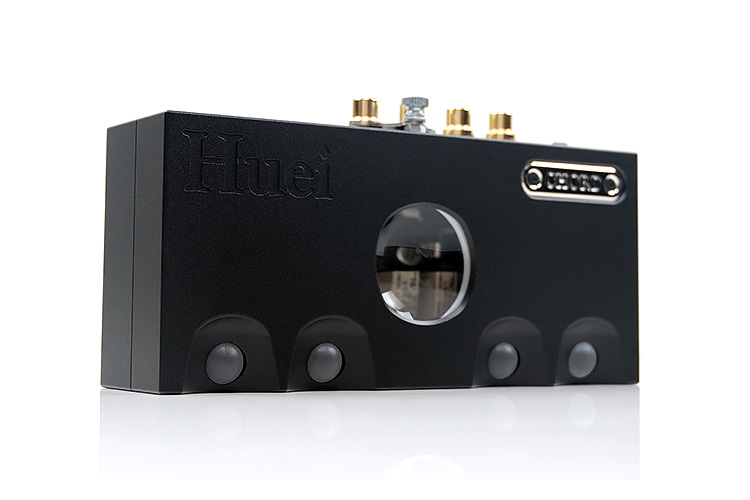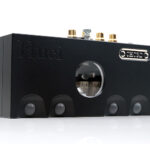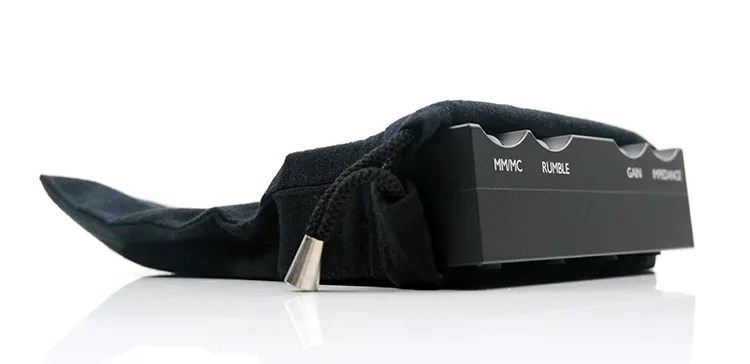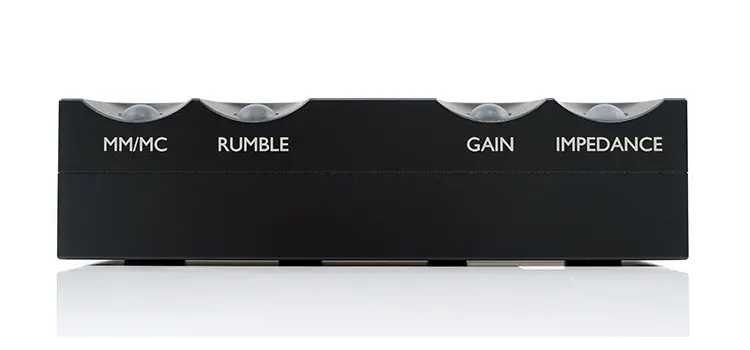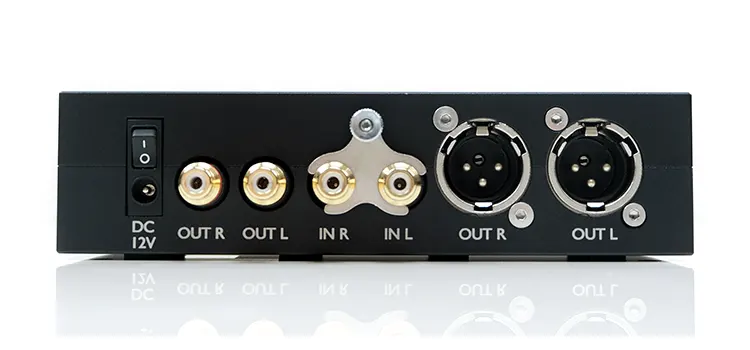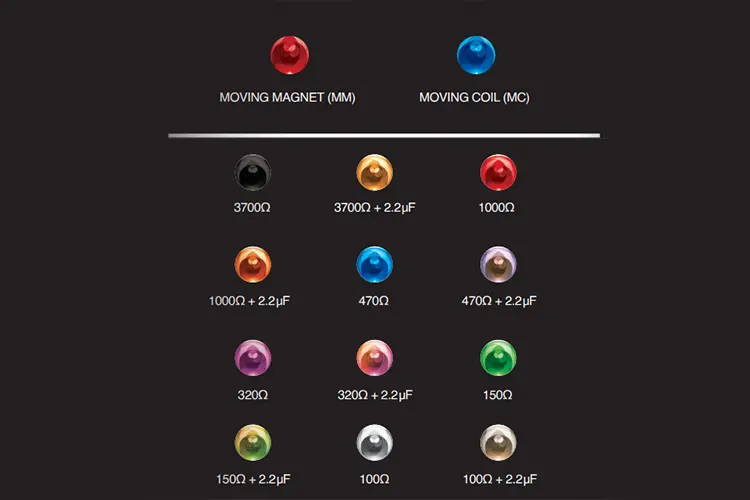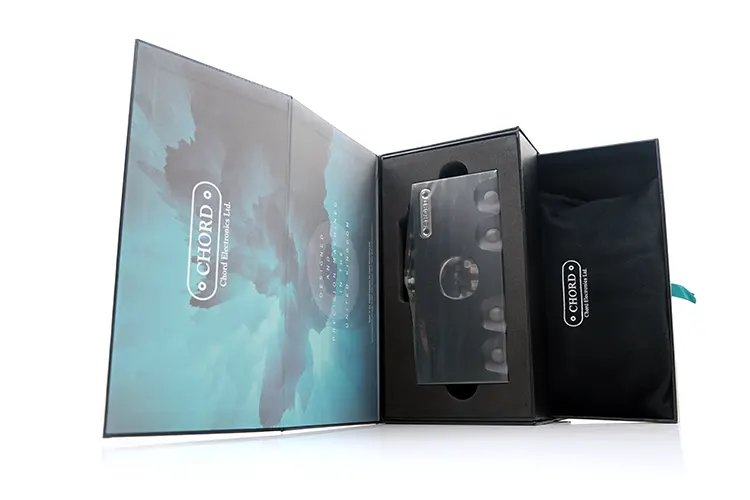Today, we review the Chord Electronics Huei, which is a compact desktop phono stage with moving magnet and moving coil compatibility. It is priced at $1,775.00 US or £1,149 UK.
Disclaimer: This sample was sent to us in exchange for our honest opinion. Headfonics is an independent website with no affiliate links or status. We thank the team at Chord Electronics for their support.
You can read more about the Chord Electronics products we have previously featured on Headfonics by clicking here.
Note that this article follows our current scoring guidelines, which you can read in more detail here.
Something a little different this time on Headfonics. The Chord Electronics Huei is a compact phono stage that was launched sometime in 2020.
Though traditionally it would be seen as an essential component in a classic HiFi setup, more and more, I see headphone users adopt them as part of their desktop system.
Positioned as part of Chord’s ‘trifecta’ desktop setup that includes the Qutest DAC and the Anni headphone/speaker amplifier, the Huei feels like a ‘no-brainer’ missing piece in the jigsaw.
My turntable setup is probably a bit more modest than most but one that has been integral to my listening for the last 8 years with a Rega Planar P1 and a few phono stages from ALO Audio and Project Audio feeding into a mix of both tube and solid-state headphone amplifiers.
The addition of another reasonably high-end phono stage into the listening chain is thus a welcome bonus but priced at $1775, the Huei is not a cheap afterthought either.
Tech Highlights
Positioning
The Huei is not Chord’s first gig in the phono stage niche.
They currently have a higher-end model called the Symphonic which has a lot of the design language associated with high-end models such as the DAVE, both of each belong in their Choral range of products which includes the likes of the Etude power amplifier and the Prima preamplifier.
The Huei is positioned one step below in what is officially called the Qutest range alongside the Qutest DAC and Anni headphone/speaker amplifier. The name is rather apt here because each unit is identical in form factor and design language and designed to stack very neatly on top of each other with an accompanying stand system.
Features
What differentiates the Huei is that it is currently the only phono stage from Chord Electronics that offers both Moving Magnet and Moving coil compatibility in a single box. Whereas the higher-end Symphonic is Moving Coil only. That greatly appeals to me since all my humble cartridges for the P1 use a moving magnet.
If you are an MC user, however, you will be pleased to know that the Huei does offer a wide range of impedance values, (12 from 100Ω – 3,700Ω), within its system for proper cartridge matching as well as an 8-step user-selectable gain stage.
For MM users, the impedance is a set-and-forget default 47,000Ω and you have the same 8-step gain stage control which is something I have been tinkering with a lot during my time with the Huei.
The Huei’s equalization response adheres to the RIAA standard within +/- 0.1dB with an additional rumble filter, ( Rausch Slope -24dB per octave below 50Hz), that reduces any audible volume from the turntable’s drive mechanism during the equalization process. A filter that genuinely works, especially with the higher gain stages.
Design
As with the Qutest and the Anni, the Huei is a stylishly compact rectangular device with a supremely solid black chassis precision machined out of a single aluminum billet.
It officially measures 41mm (H) x 160mm (W) x 72mm (D), and a very light 657g making it a perfect stacking match for the DAC and amplifier. So much so, you can also buy the matching stand and position the Huei on top turning the three components into one very slimline system.
The design language is very much signature Chord with Huei’s sunken orb multi-color orb control system to the front and a perspex porthole or ‘feature viewing glass’ on top that lights up green when powered on. Everything I/O related is neatly laid out on the rear of the device.
Chassis cornering is relatively smooth but not overly so. The rear input and output sockets are well-spaced for such a diminutive device with gold-plated finishing to create a nice level of contrast between them and the black body finish. Securing screws are all to the base and very deep-set to the point of invisible.
Chord has completed the design of the Huei with shock-absorbent grippy feet on the base should you wish to place it independently of the Qutest Stand System.
I/O
One of the more surprising I/O options at the back of the Huei is the provision for dual 3-pin XLR analog outputs alongside the expected single-ended dual RCA.
Chord rarely provides an XLR output at this level in their product range, save for the Hugo TT2/TToby which is technically the next step up. The Anni itself is only single-ended so, if you intend to do a system match, then XLR will be redundant.
The Huei does come with a 12V output socket and you will find a 12V DC adapter in the box. However, if you have the Anni you will not need it. Another benefit of this stack is the ability to integrate the Anni power system’s DC out feature directly with the Huei and the Qutest.
That means you just need one 15V 4-pin socket external supply to deliver power to all 3 units which saves on multiple power socket use.
In between the analog outs is the dual RCA input for receiving your turntable analog output. One thing to note, there is a grounding post above which for some turntables will be a mandatory feature.
However, for turntables such as some of the Rega Planar models, the grounding is within the tonearm with no separate grounding post. Therefore, the visible triangular grounding plate between the dual RCA sockets and the grounding post is a welcome addition.
Controls
Consistent with the Qutest range, the Huei uses Chord’s orb system for tweaking all the settings save for power which is a simple on/off switch at the back.
In some instances, it is very easy to operate with the switch between MM and MC a long press of the far right orb until it glows red for MM or blue for MC. Similar also for the rumble filter, it is either on or off.
However, for the gain and impedance the use of the orb color system is far less intuitive, particularly for the latter over the former.
If you are an MM cartridge user, the impedance value is moot as you will not be using it. Rather, you will be working your way through the 8-stage user-selectable gain stage which covers a 21 dB – 42 dB range with one color per incremental gain increase. If you are using an MC cart the gain setting is slightly higher at 49 dB – 68 dB.
Learning the exact sequence of colors per gain stage is tricky. You can easily remember white as the lowest and black as the highest, the rest of the color sequence often had me reaching for the manual to double-check.
It becomes even more complex with the MC impedance setting which has 12 different color codes with variations between regular impedance and µF alternatives. Again, the manual nearby either in digital or physical format is very necessary.
Packaging & Accessories
The Huei comes in a fairly recognizable Chord-type packaging which means professional but slightly understated.
Inside the black well-labeled outer box you have a split shelf foam-cushioned tray system with the Huei unit on the top shelf and the accessories in a cloth pouch as well as the manual on the bottom shelf.
Along with the manual, you get a physical print of all the Gain/impedance settings on a single reference card which I strongly suggest you keep nearby for quick referencing when tinkering with the Huei settings.
Aside from the plethora of documents, you also get a 12V 2A switching barrel-type power supply but nothing like a spare set of RCA cables or a grounding cable which would have been a nice bonus.
Click on page 2 below for sound impressions and our selected comparisons.

